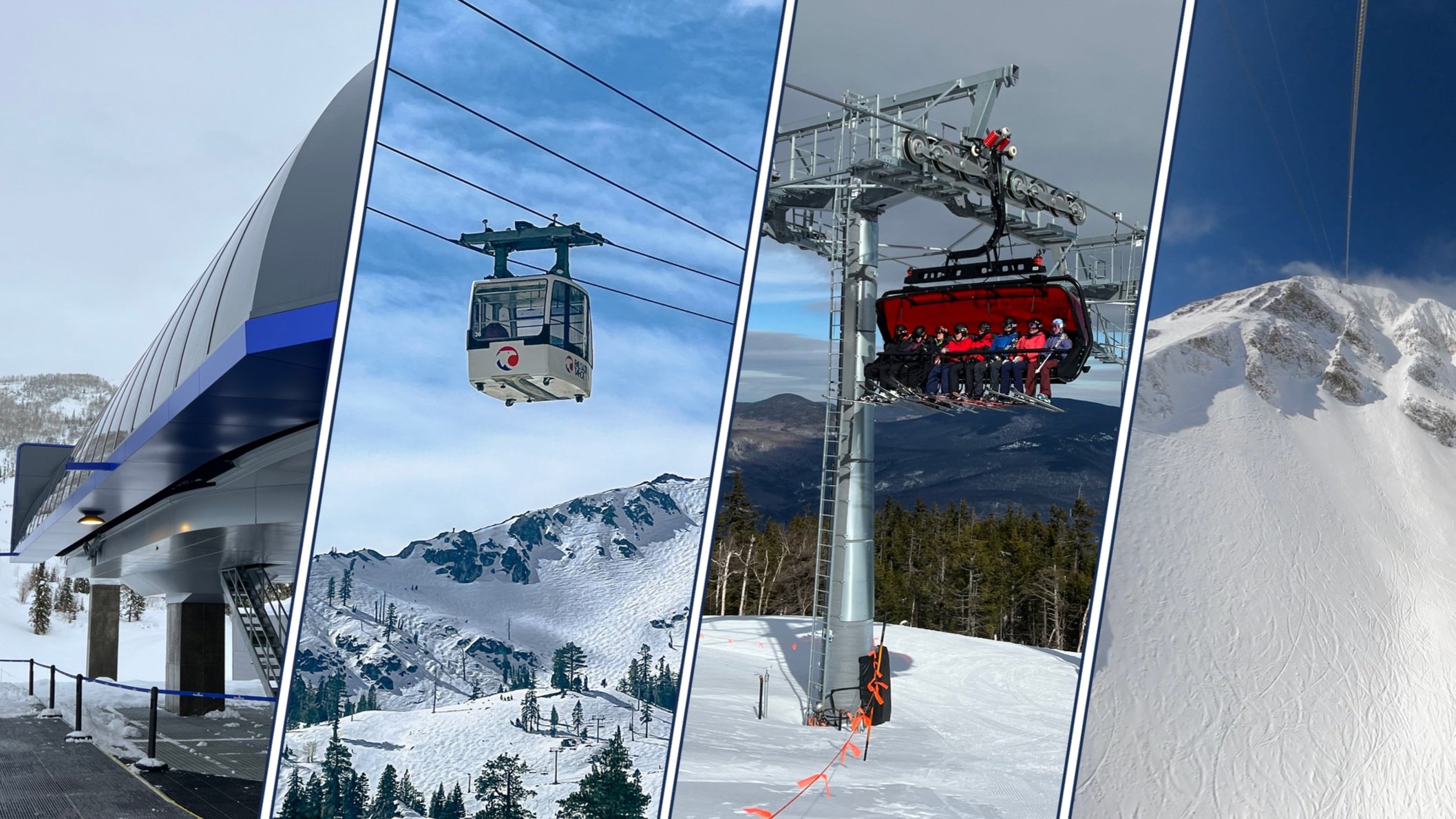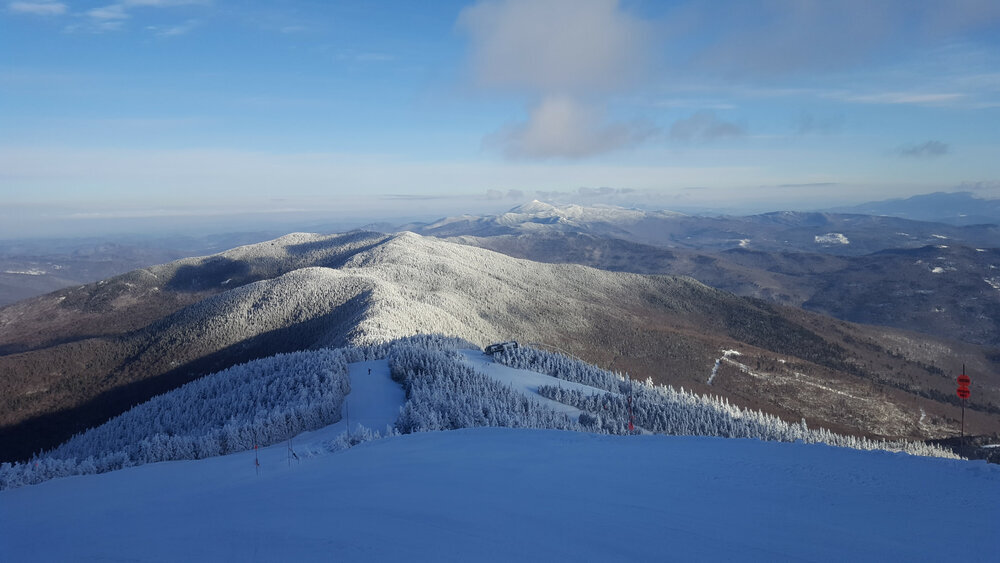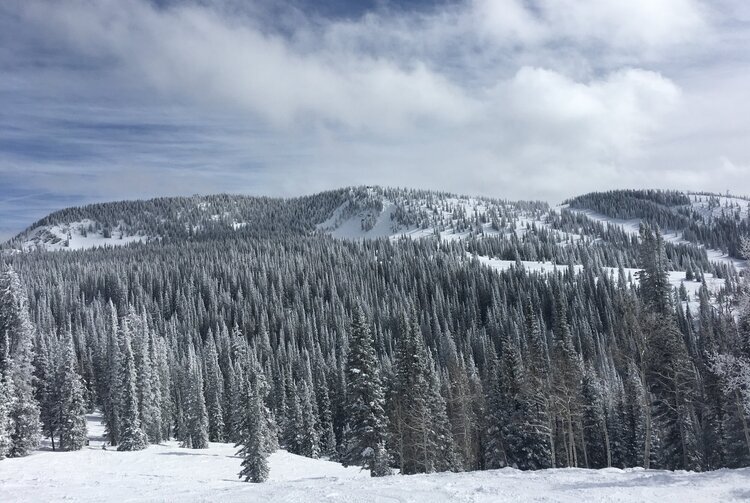Mountain Review: Stratton
MOUNTAIN SCORE
CATEGORY BREAKDOWN
See our criteria5
Snow:
6
Resiliency:
4
Size:
5
Terrain Diversity:
5
Challenge:
8
Lifts:
6
Crowd Flow:
6
Facilities:
8
Navigation:
3
Mountain Aesthetic:
GOOD TO KNOW
1-Day Ticket: $83-$199
Pass Affiliation: Ikon Pass
On-site Lodging: Yes
Aprés-ski: Moderate
Nearest Cities: Boston (3.5 hrs), New York (4.5 hrs)
Recommended Ability Level:
+ Pros
Lift infrastructure
Impeccable resort signage
Size and terrain for southern Vermont
Snowmaking and grooming operations
– Cons
Crowds
Commercialized feel
Inconvenient overflow parking
Lack of true expert terrain
Peak-time lift ticket prices
MOUNTAIN STATS
Lifts: 11
Trails: 99
Beginner: 40%
Intermediate: 35%
Advanced/Expert: 25%
RECENT ARTICLES
VIDEO
Mountain Review
As one of the southernmost Vermont ski resorts, Stratton has long been an go-to choice for those looking for a decently-sized mountain within easy driving distance of the New York and Boston metropolitan areas. The mountain delivers an ideal family experience thanks to diverse terrain and easy navigation, but like at most southern Vermont resorts, you’ll be giving up some snow and terrain quality for the convenience.
Size and Terrain Diversity
With over 670 acres of skiable terrain, Stratton is the second largest ski resort in Vermont (although some nearby competitors do come close)—and on paper, the resort stands out for its size. However, this terrain sits along a pretty vanilla footprint, with very little in the way of distinctive trail designs and unique natural features across the slopes, especially compared to what you can get if you drive a few hours north.
Stratton does offer a respectable variety of terrain for southern Vermont, but don’t expect to be surprised or moved emotionally by any of its trails. Stratton’s vertical drop is also shorter than several competitors, with a lift-served drop of just over 1,900 feet, a few hundred feet less than the best mountains in central and northern Vermont. The resort technically advertises a 2,003-foot vertical drop, but this is only attainable if you ski down to the overflow parking lot, which doesn’t have any lift service.
While Stratton is the second largest ski resort in Vermont, its terrain sits along a fairly ordinary footprint.
Resort Layout
While several competitors boast multiple peaks, Stratton is just one mountain, with a singular summit and two base areas. The mountain can essentially be broken down into two resort sides: the main side, which is home to terrain for all ability levels and offers a more favorable north-facing terrain exposure, and the Sun Bowl side, which features a longer vertical drop, slightly tougher terrain, and somewhat fewer crowds.
Beginner Terrain
Stratton isn’t the most beginner-oriented ski resort in Vermont, but those learning will still find a decent experience here. A bunny hill and the nearby, relatively flat Tamarack area call home to most of the resort’s green trails—but while these spots are isolated from more advanced skier traffic, they’re plagued by slow, fixed-grip lift service (although for the 2024-25 season, a new high-speed quad is planned for this learning area).
Most of the other lifts on Stratton’s main side do serve at least one green trail. Beginners can access a few green runs from the summit, but these popular trails tend to become very crowded. There isn’t very much green terrain on the Sun Bowl side, but some of Stratton’s blues, especially in lower-mountain areas, are on the easier side for Vermont and might be considered greens at other mountains.
TRAIL MAP
Intermediate Terrain
Speaking of blues, Stratton offers a solid variety of terrain for intermediates—and the resort might be better designed for this demographic than any other.
The resort is chock full of moderately-sloped groomed cruisers. Although blue trails directly off the summit are somewhat limited in number, some of the resort’s black runs are groomed, and many intermediates who have skied or boarded further north won’t have much of an issue with them.
Stratton does also feature a handful of intermediate-centric glade zones in lower-mountain areas, which can be a lot of fun for those looking to get into tree skiing or riding; however, thin cover is always a given on these, even on the best days.
Stratton may appeal to more to intermediate skiers more than to any other demographic, with plentiful moderate groomers and glades.
Advanced and Expert Terrain
Stratton’s hardest terrain exists on the upper half of its footprint. Single-black runs are a mix of fairly steep groomers and ungroomed bump runs, with grooming operations tending to get heavier during holiday periods. Some black runs feature side-by-side groomed and ungroomed terrain, which can be nice for those learning moguls.
If you’re looking for truly difficult terrain, the resort offers a few decently formidable double-black off the Ursa and Shooting Star lifts, but the actual steep sections of these trails are short, and even these runs get groomed sometimes. The mountain also features a number of enjoyable advanced and expert glade areas, but Stratton is much more for families than thrill seekers, and those looking for serious challenges can find much better options elsewhere in the state.
Stratton does offer some challenging terrain, but the mountain is geared more for families than for thrill seekers.
Terrain Parks
Freestyle visitors will enjoy Stratton’s competitive range of terrain parks. The five parks offer diverse features for all ability levels and are designed with progression in mind.
For 2024, Stratton has significantly revamped some of its terrain park offerings. In addition to the typical boxes, rails, and jumps ranging from extra-small to large, the resort now has a boardercross setup along the length of the Big Ben run. When snow conditions allow, typically in the second half of the season, Stratton also offers a 18-foot halfpipe.
RECOMMENDED SKIS FOR STRATTON
NOTE: We may receive a small affiliate commission if you click on the below links. All products listed below are unisex.
Recommended all-mountain ski
Recommended carving ski
Recommended glade ski
Recommended expert/touring ski
Ease of Navigation
Getting around Stratton is easy thanks to a well-designed mountain layout and impeccable signage. Trail markings at every intersection make the directions to each mountain area or lift abundantly clear. While the resort contains two bases and a few distinct areas, you’ll never end up in the wrong place if you just follow the signs.
The mountain’s sole summit area is easy to reach and provides access to every trail on the mountain. It takes at least two lifts to get to the top from the Snow Bowl base, but the main base area offers direct base-to-summit access via the gondola. On the other hand, some trails in or out of major resort areas are relatively flat.
Top-notch signage and an easy-to-understand mountain layout make it easy for guests to find their way to whichever base area they please.
Crowds and Uphill Capacity
As one of the closest decently-sized resorts to major northeastern metropolitan areas, Stratton is known for its crowds, especially on weekends and holidays. But while it doesn’t solve the problem, Stratton does its best to mitigate the effects of crowding with one of the best and highest capacity lift setups in Vermont. The resort boasts a gondola, four high-speed six-pack lifts, one high-speed quad, and a few helper fixed-grip lifts, all of which work together to provide high capacity in every mountain area. Every lift has at least one alternative, resulting in a lack of resort chokepoints.
Mountain Aesthetic
But while Stratton’s large uphill capacity efficiently moves visitors up the hill, it also leads to very few pockets of isolation around the resort. If you visit on a peak weekend or holiday, it will be hard to find parts of the mountain where there aren’t others around you. The resort’s relatively flat summit doesn’t do it any favors either, lacking much in the way of unique natural characteristics to make up for the number of people there. The resort often sees cloudy weather, but views on a clear day are tame compared to some other Vermont resorts.
Stratton’s mountain feel is hurt by its mellow summit and lack of isolated areas.
Snow Quality
Like all mountains in southern Vermont, Stratton sees variable conditions throughout the season thanks to varying temperatures and mediocre natural snow accumulation. The resort does see a few powder days each season; however, after sudden temperature drops or a few days with no snow, runs tend to lack cover or get icy.
Annual snow totals are somewhat lower than most ski resorts in central and northern Vermont. Fortunately, the resort’s largely north-facing footprint does help preserve terrain quality when temperatures remain below freezing.
Snowmaking and Grooming
When natural conditions aren’t the best, Stratton does offer decently strong snowmaking operations. The resort boasts snowmaking coverage on an impressive 95% of its footprint, which provides resilience and gives the resort flexibility to operate nearly all of its mountain areas even with poor natural conditions.
This all being said, this coverage metric does not always translate to reality. In typical years, Stratton does not take full advantage of its snowmaking capabilities—and a considerable minority of trails, especially ungroomed advanced and expert runs, usually remain closed through the end of January or so.
But even if Stratton can’t match resorts further north in terms of the percentage of trails open, the resort also stands out for its grooming. Guests can expect reliably smooth trail conditions on all green and blue runs, as well as a sizable chunk of single-black and even double-black trails.
Thin cover at Stratton can be an issue, but the mountain has strong snowmaking and grooming capabilities to make up for its modest average snowfall.
On-Mountain Facilities
While Stratton doesn’t consistently see the same frigid temperatures as ski resorts further north in the state, the mountain can get pretty cold and uncomfortable at times. But fortunately, if you’re looking to go in for a break, there are a number of places to stop in and warm up.
The main and Sun Bowl base lodges are probably one’s best bets for a break, with decent amounts of seating and both food and shopping options. Choices become more sparse on the mountain itself; the Mid-Mountain Lodge near the top of the American Express lift is one’s only choice for food above the base, and it gets packed on weekends. The small Summit Deck and Hubert Haus shacks at the top provide seating and isolation from the elements, but they offer no services at all, including bathrooms, and aren’t always open.
RECOMMENDED SNOWBOARDS FOR STRATTON
NOTE: We may receive a small affiliate commission if you click on the below links. All products listed below are unisex.
Recommended intermediate board
Recommended advanced board
Recommended expert board
Recommended touring board
Getting There
One of the most appealing features of Stratton is its proximity to major Northeast cities. The resort is about four-and-a-half hours away from New York and three-and-a-half hours from Boston, making it about an hour or two closer to these cities than popular mountains in central Vermont. Where there’s no official public transportation between Stratton and these cities, several private companies run weekend or even day trips from the New York City and Boston metropolitan areas. This makes Stratton a very practical option for a weekend getaway, especially if you don’t have a car.
Ikon Pass Access
Another enticing feature about Stratton—it’s the closest mountain to both of these cities that’s unlimited on the Ikon Pass. All mountains that are closer only come with 5 or 7 days of access depending on your pass level.
Stratton is the closest ski resort to New York City and Boston with unlimited access on the Ikon Pass.
Lodging
If you want to stay on site, Stratton offers an extensive selection of on-mountain hotels and condos. Many of these are in the resort’s village, which hosts many evening attractions, and others are directly slopeside. All on-mountain options are pricey, however; a few reasonably priced Airbnb are within close driving distance of the resort, but most other cheap options are several miles away.
Parking
While the resort doesn’t force visitors to pay, parking at Stratton can be a bit of a pain, especially during peak times. Overflow parking at Lot 2 is a mile away from the main base area and requires a shuttle to get to the slopes—although thanks to the Tree Top Way trail, the lot does at least offer ski-in access. If you get to the mountain earlier or go on a less busy day, other parking options are closer and only require a small walk to the lifts.
If the main parking lot at Stratton fills up, guests may be forced park a mile away and use a shuttle to get to the slopes.
Aprés-ski
While it’s no Killington or Tremblant, Stratton offers aprés-ski and nightlife experiences that are within the upper echelon of what you can get in the Northeast. Grizzly’s is the main slopeside bar, and it gets packed when the lifts close. Stratton Village hosts a mix of quiet sit-down bars and lively venues; some of the best include Bar 802, a sit-down joint with excellent food and beer selections, and Mulligan/Green Door, a duplex with casual pub vibes on the top floor and live music or DJs on the bottom. The village also features a number of restaurants that tend to get busy. When things start to warm up during the spring or on an unusually warm winter day, guests will appreciate outdoor patios at a number of establishments.
Stratton offers a compelling mountain experience at a reasonable distance to major metropolitan areas, but it isn’t cheap.
Verdict
Stratton delivers an admirable combination of terrain diversity, lift infrastructure, and easy navigation, and the resort lives within a reasonable driving distance of major metropolitan areas. But the resort doesn’t offer the snow, challenge, or isolation of other Vermont mountains, and despite the high uphill capacity, slopes can get really crowded on peak weekends and holidays.
Pricing
Perhaps the biggest drawback about Stratton is its ticket price. 1-day rates don’t only match those of better resorts just a few hours further north, but they often exceed them, with prices going for nearly $200 on weekends, even if you buy in advance. This is an insane amount to be paying for any ski resort, let alone one that offers what might be described as a slightly-above-average experience at best.
Off-peak weekday tickets are more reasonable, but if you choose to visit Stratton, it’s probably wisest to plan ahead and do so with an Ikon Pass product.






























We rank the Vermont ski areas in order of overall mountain experience, and we highlight the strengths and weaknesses of each one.